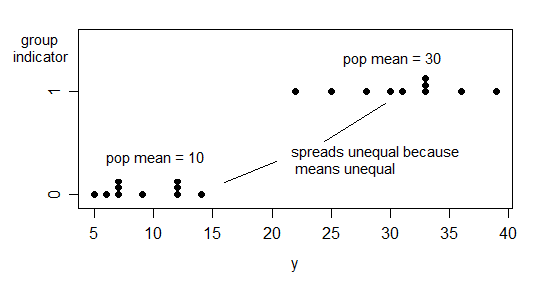Until now I had learned that the variances of Bernoulli and Poisson random variables are $p(1-p)$ and $λ$ and that for fixed $p$ and $λ$, these variances are constant.
Now, introducing glm, my course says:
- linear model: $\quad Var(Y_i)=σ^2$, where $σ$ is constant
- binomial model: $Var(Y_i)=μ_i(1−μ_i)$
- Poisson model: $Var(Y_i)=μ_i*$
so the variance of the binomial and Poisson are not constant as I believed but depend on $Y_i$, ie, unless I misunderstand the notation, on the single observation.
I am unable to understand how that can happen, ie why we have a different μi for every observation.
(to be complete I am also unable to understand how a single observation/data-point can have a variance, statistic that I have always seen defined for a sample, not for a single observation, though I realize that in some contexts one can identify an observation with a specific variance, see my answer to myself help to understand how residual standard deviation can differ at different points on X)
Can someone help me to understand this or point to eventual mistakes in my understanding?

